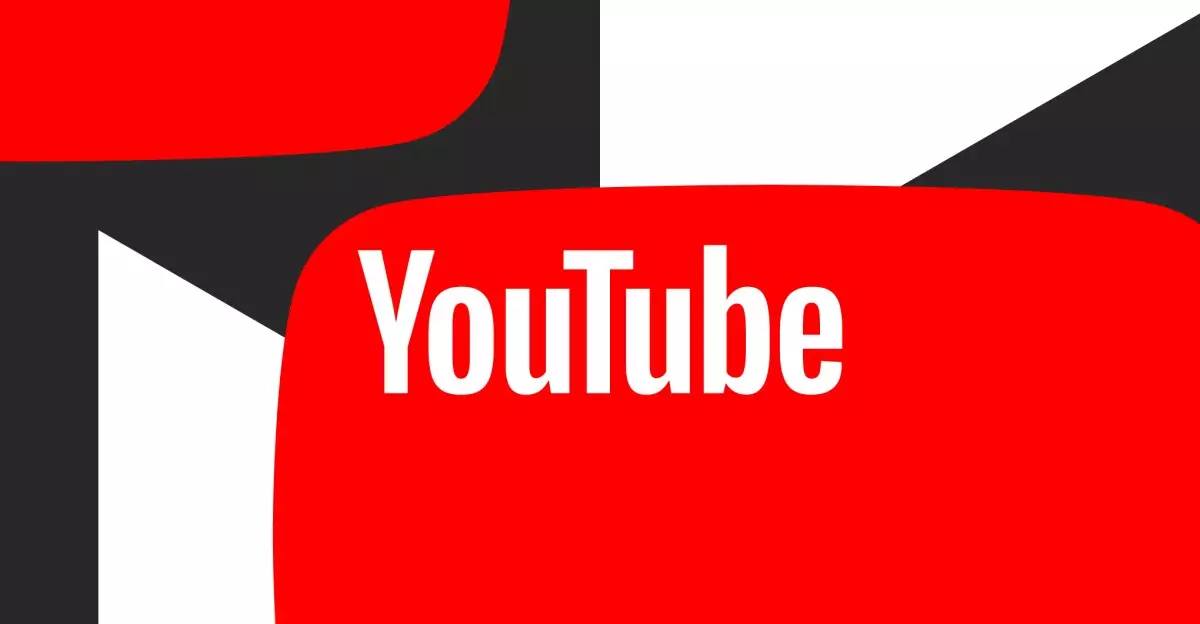In an unexpected twist befitting the tumultuous landscape of online content, YouTube has made a significant pivot in its content moderation strategy. Reflecting the complex balance between free expression and the potential for harm, the platform now aims to uphold a higher threshold for the removal of videos that may infringe upon its policies. This shift has come at a crucial moment in an era where the ability to voice diverse perspectives is becoming increasingly essential. According to a report from The New York Times, modifications within YouTube’s internal guidelines suggest that content deemed to hold “freedom of expression value” could remain accessible, even if it strays into the territory of misinformation or hate speech.
This change raises critical questions about the implications of “public interest.” Previous policies enacted during tumultuous political climates had resulted in stringent removal practices designed to curb the spread of false information, notably concerning public health narratives surrounding the COVID-19 pandemic and misinformation about elections. However, as the digital age collides with an evolving political landscape, the platform seems poised to embrace a more permissive stance that not only reflects societal shifts but also responds to mounting external pressures.
Navigating the Fine Line of Public Interest
The updated guidelines, crafted in-house and loaded with examples across various contentious topics such as race, gender, and immigration, indicate a strategic maneuver aimed at fostering robust discourse. YouTube now instructs moderators to allow videos that may initially seem harmful if more than half of their content adheres to rules. This percentage shift from 25% to 50% suggests a looser grip on standards — a potentially dangerous precedent in the realm of misinformation.
The implications of this are far-reaching. By allowing borderline content to remain online, YouTube is not merely changing an internal policy; it is signaling a shift in its role and responsibilities within the digital ecosystem. The power of the user-generated content platform now teeters significantly on the judgment of its moderators, enabling them to discern the value of freedom of expression over the potential risks associated with the content they are reviewing. It’s an audacious gamble that presupposes a well-informed user base capable of discerning fact from falsehood.
Contradictions in the Face of Historical Context
To understand the significance of these new guidelines, we must consider the historical context. YouTube has previously tightened its grip on misinformation in response to both the Trump presidency and the surge of reactionary discourse that followed. During that era, rigorous measures were enacted to eliminate misleading narratives surrounding vaccines and election integrity, often resulting in videos being removed without the nuanced evaluation of their broader impact on public discourse.
In recent months, the shift has been palpable, echoing the broader trends across social media giants. Similar to YouTube, Meta has also revised its stance on moderating hate speech and has curtailed extensive third-party fact-checking in favor of community-based validation methods. This retreat from stringent moderation frameworks seems to align with an ongoing backlash from politicians and public sentiments towards perceived censorship within digital platforms. The nebulous links between these policy alterations and political climates present an intricate tapestry of motivation that invites skepticism.
A Risky Balancing Act
While YouTube’s spokesperson underscores the necessity of balancing free expression with harm reduction, the apparent relaxation of moderation policies invites a broader evaluation of the responsibilities held by extensive platforms in managing content that could have palpable real-world effects. The decision to prioritize public interest across contested topics, while liberating, may simultaneously expose the platform to increased scrutiny and responsibility. It creates a dangerous volatile ecosystem where the subjective interpretations of content may lead to consequential dissemination of harmful ideas under the guise of public discourse.
Prominent cases such as videos discussing the controversial views of Robert F. Kennedy Jr. highlight this point emphatically. The notion that provocative content surrounding significant public health issues can be maintained on the platform helps to cultivate spaces for dialogue but at what cost? The ramifications of such decisions could lead to amplified disinformation narratives swirling within the very channels designed to promote authentic dialogue.
YouTube’s recent policy endeavors embody an ambitious attempt to redefine what content will thrive on its platform, but whether it ultimately promotes genuine discourse or devolves into a free-for-all of misinformation and division remains to be seen. The platform walks a precarious line, entangled in the larger discourse surrounding digital responsibility and expression that could shape the future of online engagement.

